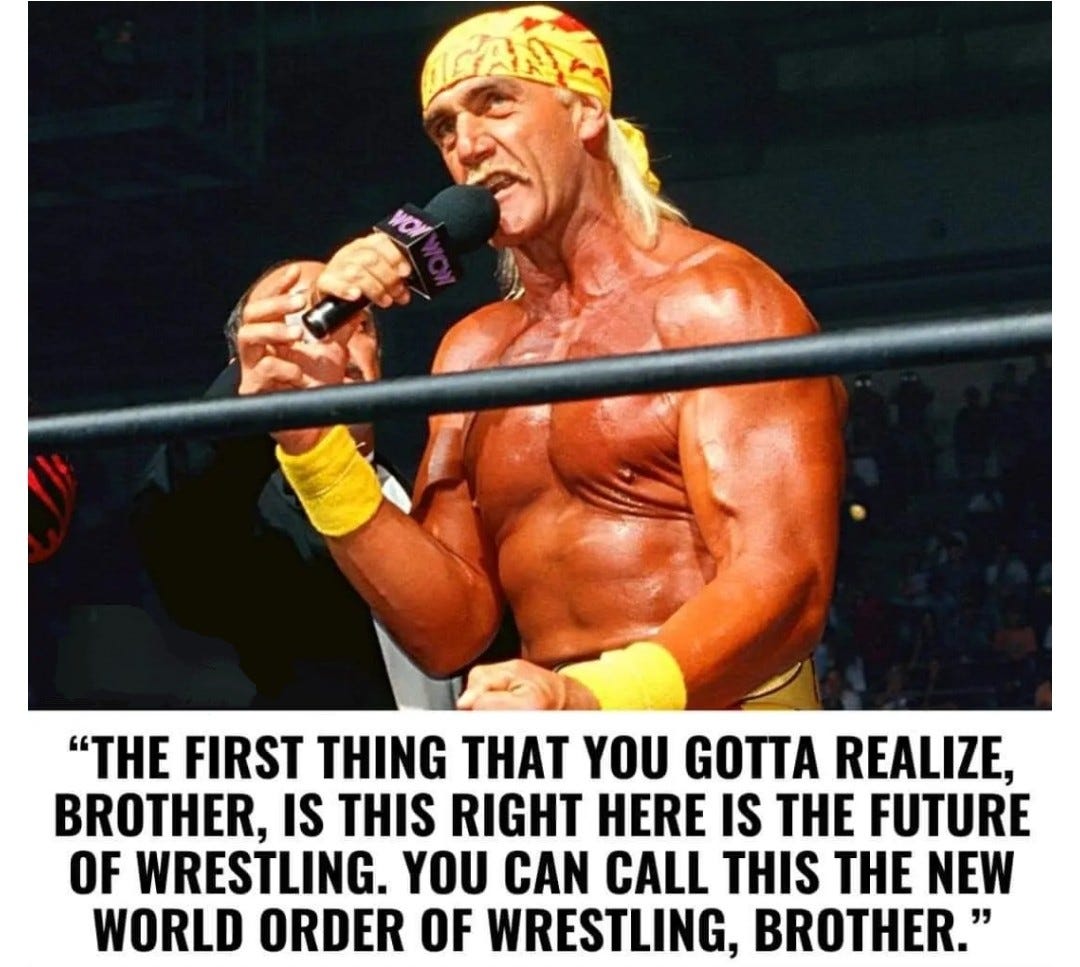Beyond Good and Evil: The Evolution of Heroes and Villains in Professional Wrestling
Dan Westony and Israel Joffe explore the evolution of heels and faces in professional wrestling
The Origins of Heels and Faces
Professional wrestling, a spectacle of sport and theatre, has been narrative-driven since its late 19th-century inception. Key to this narrative are the characters of "heel" (villain) and "face" (hero). Wrestling's humble beginnings at carnivals and fairgrounds saw the introduction of these roles, where carnival wrestlers often played the heel, while a local challenger represented the community as the face.
Expanding Arenas, Growing Characters
In the early 20th century, wrestling transitioned into larger arenas. Prominent figures like Toots Mondt and Jess McMahon began sculpting the wrestling scene into a more theatrical spectacle, leading to the emergence of distinctive heels such as "Nature Boy" Buddy Rogers.
The Golden Age of Wrestling and Television
Post-WWII saw wrestling enter the "Golden Age", coinciding with the rise of television. Broadcasting companies like the National Wrestling Alliance (NWA) and Capitol Wrestling Corporation (later WWE) capitalized on the medium, intensifying the narrative of good versus evil. Heroes like Bruno Sammartino and Ricky Steamboat clashed with villains like Buddy Rogers and Superstar Billy Graham, keeping audiences enthralled.
The "Rock 'n' Wrestling" Era
The advent of cable television and pay-per-view in the late '70s and early '80s ushered in the "Rock 'n' Wrestling" period. Hulk Hogan and "Rowdy" Roddy Piper, exemplifying the face and heel respectively, captured mainstream attention with their charismatic rivalry. Hogan, epitomizing all-American values, was perfectly offset by Piper's rebellious character.
The "Attitude Era" and the Rise of Anti-heroes
The "Attitude Era" of the late '90s marked a major shift in wrestling's narrative. Traditional good-versus-evil stories were replaced with more complex characters. Figures like "Stone Cold" Steve Austin became popular not in spite of their rule-breaking tendencies, but because of them. The Rock, too, saw his popularity soar when he transitioned from face to a charismatic heel.
The Shocking Heel Turn of Hulk Hogan
Hulk Hogan's mid-'90s heel turn was a watershed moment in wrestling history. The iconic face joined the New World Order (nWo), a notorious heel faction in WCW, subverting expectations and adding a new level of complexity to wrestling narratives.
Johnny Rodz: A Notable Heel
Johnny Rodz, the "Unpredictable One," deserves mention for his role as a prominent heel. Rodz, despite losing more than he won, was crucial in making faces look good, demonstrating that a heel's role isn't always about winning, but enhancing the narrative and elevating faces.
Evolution of Heels and Faces: The Modern Era
As the definitions of heels and faces grew more complex over time, they began reflecting societal changes and audience preferences. The rise of characters like Dwayne "The Rock" Johnson and "Stone Cold" Steve Austin showed that fans appreciate depth and authenticity. Today, the dynamic between heels and faces remains a key narrative device in professional wrestling, shaping its stories and capturing audiences' imaginations.
MJF: Embodying the Old School Heel
In the modern wrestling era, a standout figure who epitomizes the classic heel persona is Maxwell Jacob Friedman, better known as MJF. Unlike many of his contemporaries, MJF maintains his heel character both in and out of the ring. Known for his narcissistic personality, sharp wit, and willingness to disrespect anyone, MJF is a throwback to the heels of old.
His commitment to character extends to his off-camera life, as he consistently stays in character during interviews and fan interactions. This blurring of the line between reality and kayfabe (the portrayal of staged events within the industry as real) showcases MJF's dedication to his craft and his understanding of the power of an authentic heel.
MJF's dedication to his heel persona is reminiscent of the old school heels who would maintain their characters consistently, creating a sense of authenticity that made audiences love to hate them. His work is a testament to the timeless appeal of a well-played heel, and a reminder of the crucial role such characters play in the narrative tapestry of professional wrestlwrestling.
Conclusion: Wrestling's Ever-Evolving Narrative
From its inception to the present day, professional wrestling has continued to evolve, drawing from its rich history while constantly reinventing itself. The role of heels and faces has been central to this evolution. These archetypal figures have not only provided engaging narratives but have also reflected societal changes and audience preferences.
In the hands of performers like MJF, the enduring tradition of the heel-face dynamic continues to captivate fans, demonstrating that as long as there are heroes to cheer and villains to jeer, professional wrestling will continue to thrive as a unique blend of sport and spectacle.







